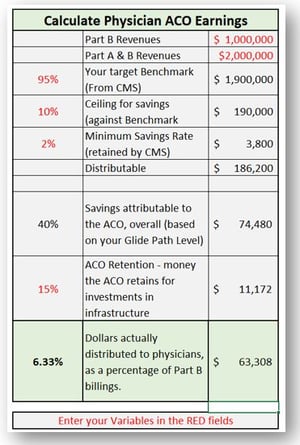 Under Advanced APM (Enhanced Track, or Level D or E in the Basic offering) providers are generally exempt from reporting MIPS. The key is "generally". The driving factor is managed at the level of each individual provider, based on the Medicare Plan coverage of each individual beneficiary seen by the provider.
Under Advanced APM (Enhanced Track, or Level D or E in the Basic offering) providers are generally exempt from reporting MIPS. The key is "generally". The driving factor is managed at the level of each individual provider, based on the Medicare Plan coverage of each individual beneficiary seen by the provider.
The issue is the most irksome for ACOs with "Affiliated Provider" Lists, since in these cases, ECs are evaluated as QP / Partial QP one at a time. For "Participation List" ACOs, the evaluation is for the ACO overall.
CMS determines a provider's patient count and Medicare revenues based on attributes of the patients seen by provider. If a provider's eligible patient volume falls below QP Threshold, they will be flagged as Partial QP. In some cases, the eligible patient volume may be so low that a provider falls out of the APM entirely and becomes a normal MIPS provider.
The only way to know is by querying the QPP site, one provider at a time. Ugh.
Here is why you should do that ugly process.
Partial QPs get to select whether they submit MIPS data or not. If they don't submit, their MIPS adjustments will be neither penalized nor rewarded. That is the default condition.
But if Partial QPs submit MIPS data, their MIPS payment adjustments for the 2019 payment year could be up to 17% (7% base plus 10% Exceptional Performance), depending on two factors. Now, we all experienced low financial adjustments in 2017, even with high MIPS performance. But as time goes on, MACRA is required by law to become more rigorous, and the payout percentages increase. Since greater rigor means that more providers will become penalized, it also means that more money will be available for good scores.
So, for 2018 and following years, it is worth your while to submit Partial QP providers (any money is better than no money). And it won't take much for the Partial QP providers to earn a MIPS adjustment greater than the QP fixed 5%. Basically, it simply requires CMS to do the job they have already committed to doing. And for your providers to simply do what they already have been doing since the days of Meaningful Use, and what your ACO does as a matter of course, then tie them all together with a simple data submission. .



